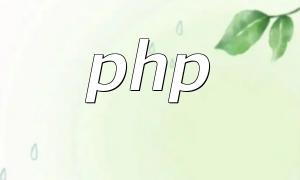In modern web development, APIs serve as a vital bridge between different applications. As a flexible and mature programming language, PHP offers multiple approaches to encapsulate applications into APIs that can be accessed by frontend clients or third-party systems. Common methods include using RESTful frameworks, native PHP functions, and third-party libraries.
Using RESTful frameworks such as Laravel, Symfony, or Slim is one of the most efficient ways to create APIs. These frameworks offer built-in routing systems and request handling, allowing developers to define endpoints and logic with ease. For example, in Laravel, you can define a route in routes/api.php and create a controller to handle requests.
<span class="fun">Route::get('/users', [UserController::class, 'index']);</span>This approach automatically maps HTTP requests and responses, streamlining the API development process.
For lightweight projects or educational purposes, you can manually build APIs using native PHP functions. The core idea is to parse incoming requests, process business logic, and return responses in JSON format.
<?php
header('Content-Type: application/json');
$requestMethod = $_SERVER['REQUEST_METHOD'];
if ($requestMethod === 'GET') {
echo json_encode(['status' => 'success', 'data' => 'Hello API']);
}This approach requires no external framework and is suitable for small, custom, or low-dependency projects.
For developers who need more advanced features, several third-party libraries can simplify the process:
No matter which approach you use, API development typically follows these key steps:
There are multiple ways to encapsulate APIs in PHP, from using full-featured frameworks to lightweight native implementations. Developers can choose the method that best fits their project’s size and requirements to deliver efficient, secure, and scalable API services.









